In this article, I review an Instagram report about influencer marketing. Find out which countries have the highest number of fake influencers.

It seems like a day doesn’t go by without some celebrity on Instagram getting in trouble. Just to give you a few examples: not long ago, Aggie Lal (@travel_inhershoes) was accused of fraud by many who bought her course. Many people stopped following her, but a few days later, in less than 24 hours, she gained more than 30000 followers. She later explained that someone had bought the fake followers to ruin her account…
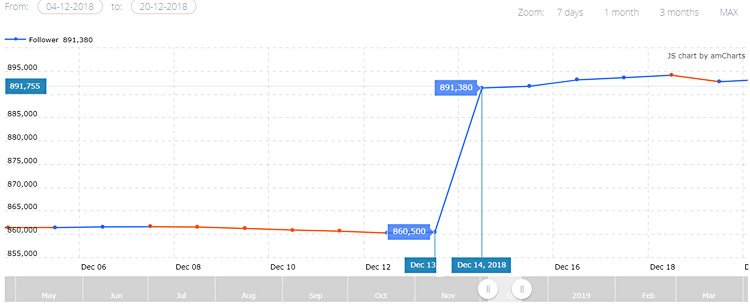
Then it was the turn of Caroline Calloway, who was accused of having organized a very expensive seminar only to cancel it when it was about to start (the story continued, and I suggest you read the article because it’s a bit more complicated than this).
Finally, recently, a report has come out that unmasks many influencers who pretend to be sponsored by famous brands: they post pictures or videos, then tag them and thank them for their products. By doing so, these fake influencers hope to get actual collaborations.
Unfortunately, the opposite happens too: someone takes advantage of those who use Instagram to work and scam them, as it happened to several photographers invited by the alleged ex-wife of Rupert Murdock in Jakarta, Indonesia. They had to pay for the trip and some strange fees only to realize it was all a big scam.
Even if these are extreme examples, they show that Instagram is an essential tool used and often abused by those who want to be known as influencers and those who want to make their brands known. This means that people are willing to reach their goals by any means, which brings me back to the title of this article.
Fake Instagram Influencers, how big a problem is it

Judging by a study released by the site Hyperauditor.com I’d say it’s pretty big. (You can find the full report in this link) For those who do not know, Hyperauditor is one of many sites that allows you to analyze any Instagram account. You can examine simple metrics such as the number of followers and the engagement rate (how many people interact with your account) and more complex metrics that are processed by the site’s algorithm called AQS (Audience Quality Score).
AQS is a 1-100 metric developed by HypeAuditor that helps to understand the overall quality of the Instagram account. A score of 100/100 indicates a perfect account (I don’t think anyone can get this score), and a score of 0/100 identifies a completely fake account. Hyperauditor is a valuable tool, especially for those wanting to hire an influencer: it’s pretty easy to see if an Instagram account belongs to an authentic or false influencer.
The main problem is that the strategies used by fake influencers often work, at least for some time. I know, for example, a famous Italian Instagrammer who regularly buys likes, and despite this, she is invited every week to significant events in her city. She often travels to tropical paradises and gets a lot of expensive stuff for free.
On the other hand, the incompetence of those who hire these fake influencers is worth mentioning. The fundamental problem is that the strategies to deceive the Instagram algorithm have become increasingly complex. If not long ago, it was enough to buy likes and followers to cheat the system; now, there are other more advanced techniques to become famous and end up on the explore page.
Hyperauditor’s report is divided into two parts: the first three chapters examine the general state of Instagram: how many accounts there are, some general stats, what kind of content it’s uploaded daily, etc… The fourth chapter is the most interesting and examines the problem of fake influencers. I want to clarify that since an algorithm extracts these data, the results are not infallible.
Hypeauditor defines an account as authentic if it meets these conditions: “a big percentage of real people among followers, authentic engagement and without anomalies on followers and followings graph.”
Fraud-Free influencers
Of the 10 countries examined, Italy has the lowest rate of fraud-free influencers.
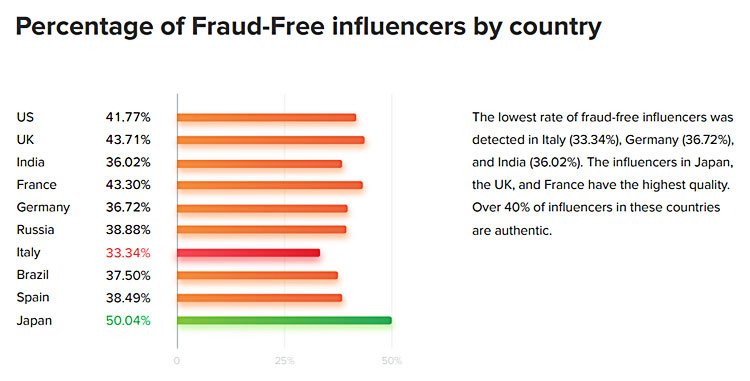
This is a recurring theme throughout the report: Italy is consistently among the countries with the highest number of fake influencers, and Japan seems to be the country with the least amount of fraud influencers.
Audience Quality Score
As the picture explains, Germany, France, and Japan have the highest average AQS, while Brazil, Italy, and the US more often use inauthentic methods of Instagram Growth.
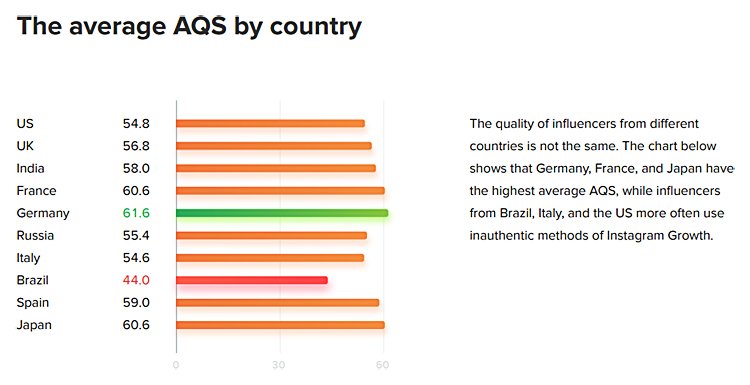
Follow/Unfollow
Another interesting data concern using a particular technique to increase followers quickly: the follow-unfollow method. In a few words, those who use this technique follow hundreds of accounts for a few days and then unfollow all of them, hoping to gain some followers. Unfortunately, it’s a technique that still works quite well. I honestly don’t understand why Instagram doesn’t limit the use of this technique since it’s one of the most easily identifiable. In Italy, 1 out of 5 influencers use it. Worse than Italy, there is only Russia—the country where this method is used the least is Japan.
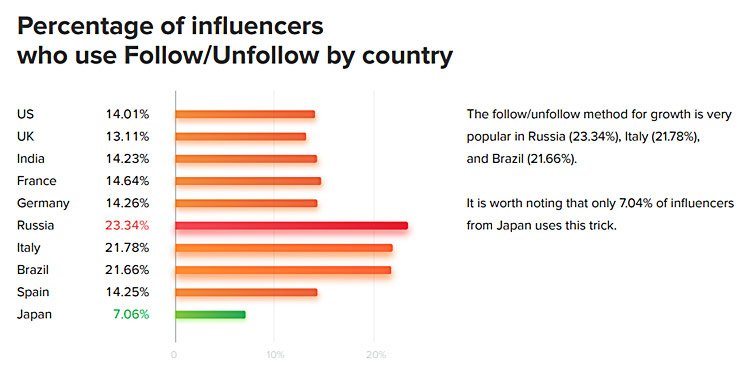
Inauthentic Comments
Another widespread technique used to deceive Instagram’s algorithm is fake comments. The reason is simple: Instagram gives more importance to comments than likes, and if it sees many comments, it rewards the picture or the video, giving it more visibility.
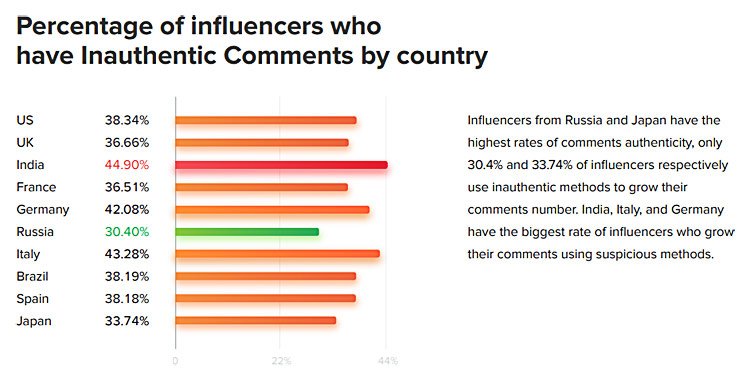
Comment Pods
Here, things get a bit more complex: there are comments created by bots (classic comments like “wow,” “amazing,” or some random emoticons) and comments written by real people with real accounts who agree to comment on each other’s photos. This technique is called Comment Pods, and groups on Whatsapp or Telegram are created especially for this purpose (but the same technique is also used for likes).
To join some of these groups, you’ll have to pay since the participants have tens or hundreds of thousands of followers (likes given by accounts with many followers are worth more than likes given by accounts with a few followers). In any case, both techniques are theoretically against the TOS of Instagram. I know several famous influencers who use comment pods.
They are easily recognizable because a picture receives almost instantly dozens of excellent comments as soon as it’s posted, but then the flood of comments suddenly stops. I understand, however, that these things are difficult to find for non-experts.
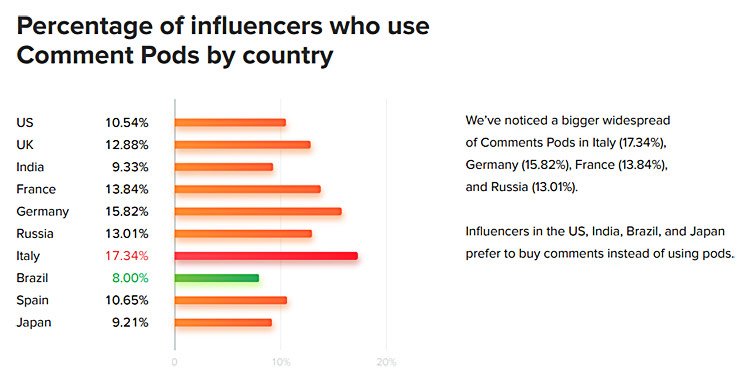
Automatic Likes usage
Finally, the last chart shows the percentage of accounts that buy likes. There are people selling subscription services where all you have to do is add your Instagram account, and every time you post something, you’ll receive hundreds of likes minutes after you just posted your content. The amount of interactions in the content just published is one of the metrics used by Instagram to reward or punish an account and many likes in a short time is an excellent signal for Instagram.
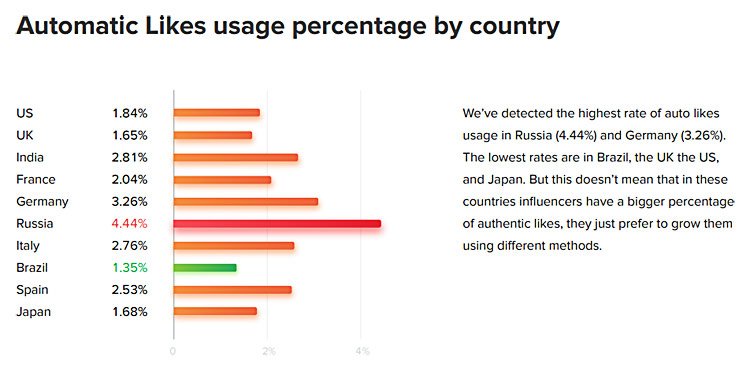
Is it ethically wrong to use those techniques?

In my opinion, this is the most critical question, and everyone should answer it in mind that Instagram does not care much about ethics: if a behavior goes against its guidelines, you risk being penalized. I would say that not all automation is, in my opinion, wrong.
I spoke on this blog about how Massplanner got shut down. Massplanner was THE bot that allowed you to manage all social networks easily.
The problem is not so much the existence of these tools but how people use them. A bot allows, for example, to examine all followers and block the fake ones, which is honestly impossible to do without this sort of tool. Another major problem is, in my opinion, the lack of knowledge from those who hire the influencers and pay for their trips (or stuff). It’s pretty easy to find fraudulent influencers, and make no mistake: hundreds of thousands of followers don’t mean that the influencer is legit.
In conclusion, I want to add that, as always, the most important thing is the quality of the content, so I always suggest focusing on producing good content, not getting good bots. Part of the problem lies in how Instagram works: changing the algorithm and limiting the number of people reached by each account was not a smart move. Predictably, people will try compensating for the drop in reach and engagement.
Let me know your score in the comments below, and if you want, please follow me on Instagram.
In this article, you can find my list of best Instagram accounts. Here is my review of Firework, a new social media app.
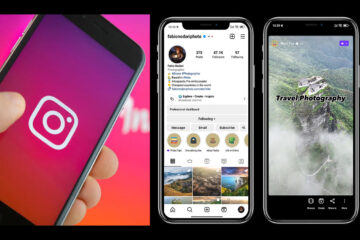


Aggie Lal is a total scam. At first I thought she was a genuine Polish person but as it turned out she thinks highly of herself and cheats her customers. What a shame! Never will I purchase anything from her! A huge disappointment to the Polish community !
Thanks for the info